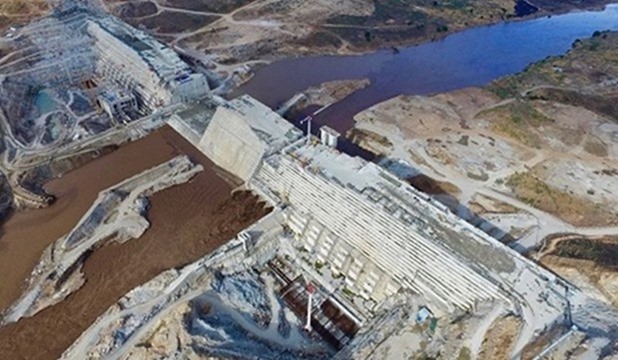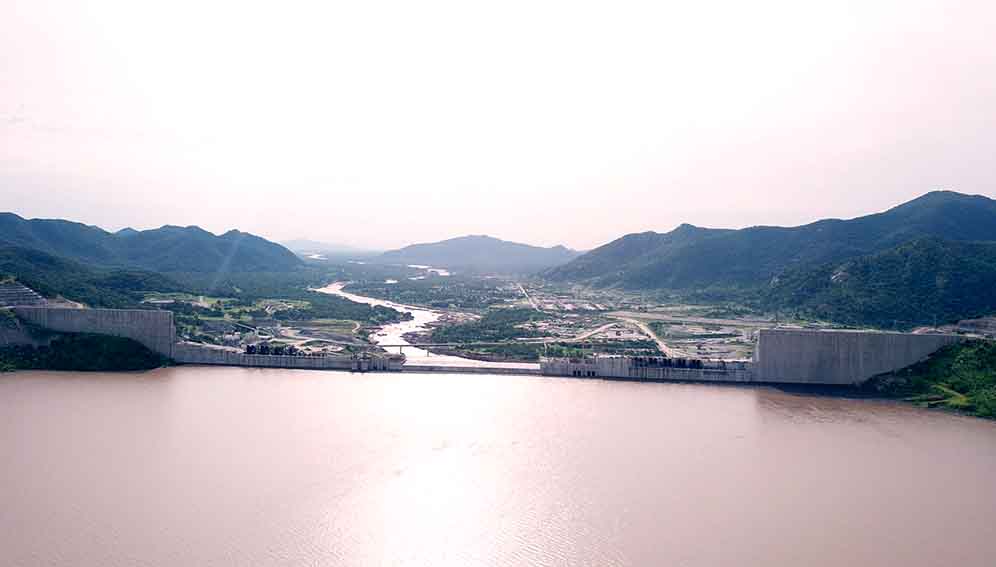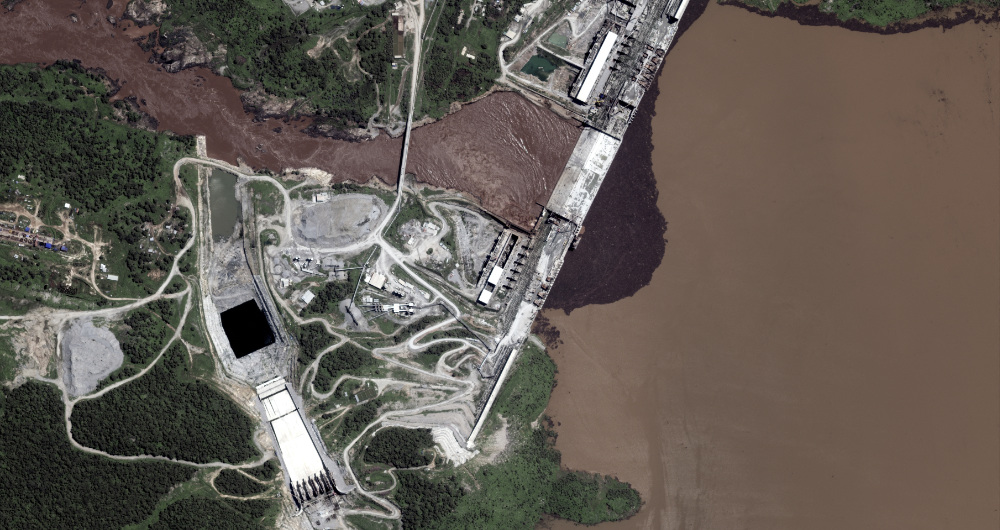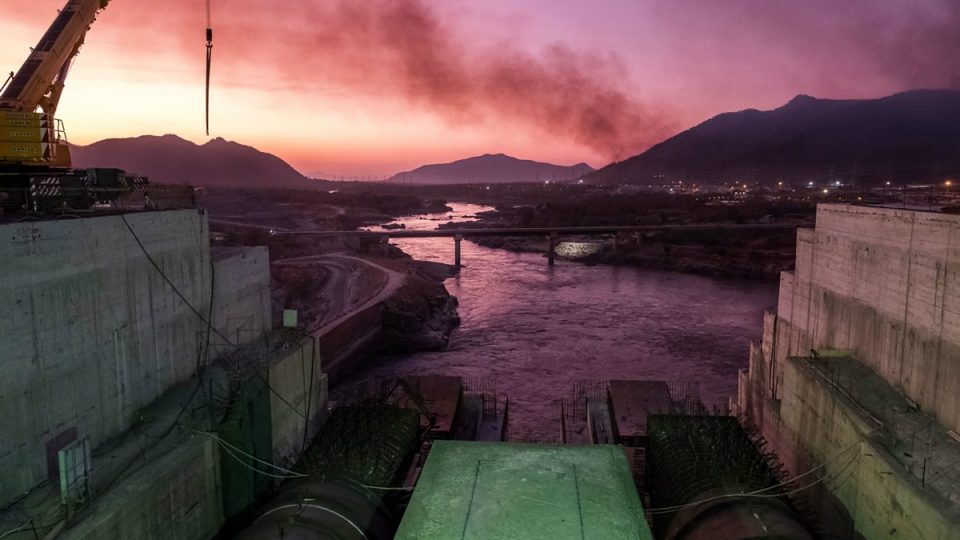FALCON POWERS – The researcher on African affairs and the Nile Basin, Hani Ibrahim, confirmed that the Renaissance Dam reservoir is causing an environmental disaster, noting that satellite images have shown that trees have been submerged at the site of the Renaissance Dam reservoir.
Ibrahim emphasized that the drowning of trees in the Renaissance Dam reservoir means the decomposition of the trees and the release of the carbon stock, which harms the environment and deteriorates the water quality in the Renaissance Dam. He added: “Satellite images show a high percentage of chlorophyll in the southern part of the catastrophic dam reservoir. The chlorophyll and sediment levels in the water bodies are preliminary indicators of poor water quality.”
He continued: “The chlorophyll content in the colors ranges from dark blue (low chlorophyll content) to green to red (high chlorophyll content). Silt concentrations are colored brown.”

He explained that “one of the most significant environmental damages of the Ethiopian dam is related to the status of the vegetation cover in the dam reservoir, which can be monitored by knowing the percentage of chlorophyll in the water, from the satellite water quality indicator, and consequently the actual images from the site of the Ethiopian dam reservoir during previous filling operations, which confirm the drowning of trees at the site of the reservoir, and that Ethiopia did not commit to removing the vegetation cover before the filling process.”
Ibrahim pointed out that the report of the International Experts Committee called for an assessment of the carbon situation in the Renaissance Dam reservoir, and said: “The issue of vegetation cover was mentioned in the 2013 report of the International Experts Committee, which called for the need to assess the available carbon stock in the area of the Ethiopian dam reservoir, and to develop models for water quality and dissolved oxygen in the Ethiopian reservoir, and its impact on water quality and biodiversity in the river and fisheries up to the estuary.” He added: “The Declaration of Principles included the approval of this matter in the required environmental studies for the dam, but it was not done, and Ethiopia pledged to remove the vegetation cover in the draft negotiations, but this did not happen.”

Ibrahim emphasized that “the issue of the available carbon stock is specifically related to the trees at the site of the Ethiopian dam reservoir, and on the sidelines, Ethiopia is trying to promote that the dam project preserves the environment and prevents emissions estimated at 2 million tons of carbon dioxide annually, which is a claim made in vain, because from another angle, the Ethiopian dam reservoir causes the elimination of trees capable of absorbing multiple times that amount and helping to mitigate the effects of climate change.”

“As is known, Ethiopia contains vast areas of forests and shrubs, including areas in the site of the Ethiopian dam lake. The carbon stock refers to the product of the photosynthesis process, in which plants absorb carbon dioxide and the trees become a storage for carbon in several sectors.
The carbon stock above the ground includes the trunk, branches, and leaves, as well as the fallen leaves and dead branches on the soil. The carbon stock below the ground includes the roots.
In general, each hectare (10,000 square meters) of trees contains an average of 85 tons of carbon, according to environmental studies. The issue of the trees being submerged at the lake site means the decomposition of the trees and the release of the carbon stock, consequently causing damage to the environment and deterioration of water quality.”


